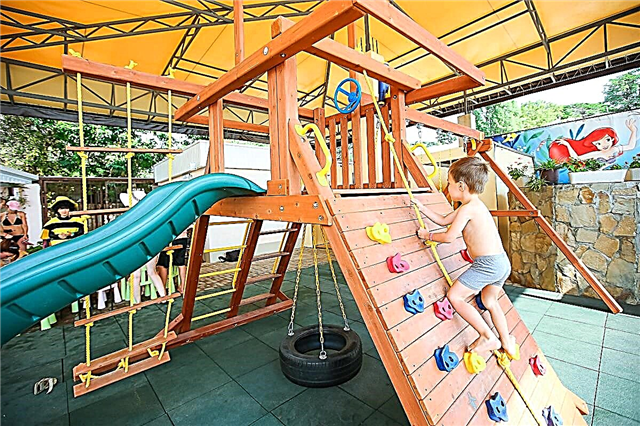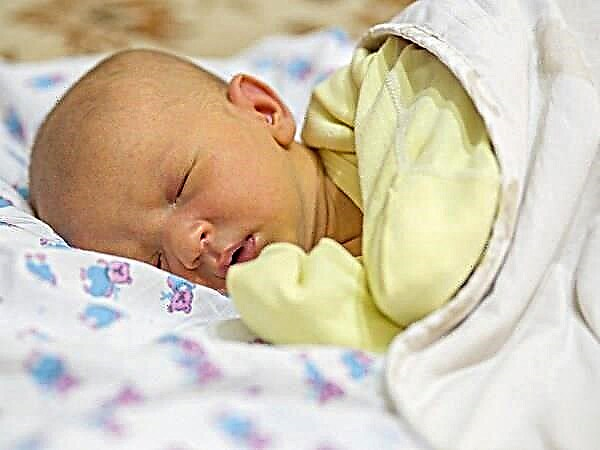
A wide selection of masses for sculpting will please any kid. One of the unusual representatives is kinetic sand. Gives a year-round feeling of the warmth of the sand, while not staining or losing properties. Its flowability and softness enhance tactile contact and give pleasant sensations, captivating the child for a long time. It has a lot of positive qualities, so the demand for it is growing.

Features, pros and cons
Kinetic sand has a second name - living. This is an unusual mass for modeling, having the appearance of sand and the properties of plasticine. Has a pleasant viscous consistency and plastic qualities. It does not dry out or stain the surface. This sand is also convenient for cleaning. If it crumbles, then its interesting consistency will allow you to completely collect it, since the grains of sand are tightly bonded to each other and do not scatter over the surface.

The homeland of this interesting species is South Korea. Although today production is widespread.
Pros:
- The naturalness of the composition guarantees the hypoallergenicity of the product.
- Does not dry out and looks like wet sand. And if accidentally wet, dries, it remains with the same properties.
- The colors can be mixed with each other.
- Develops fine motor skills, and at the same time thinking.
- Has sedative properties, which relieves excitability.
- Long lasting.

Minuses:
- When opened for the first time, the package has an unpleasant unnatural smell. But over time, it passes.
- It is impossible to build large volumetric figures due to the consistency, figures fall apart.
- The figurines cannot be stored for a long time, the sand crumbles. However, if you tamp the mass tightly into the mold, then the toy can withstand up to several hours.
- Mixes up with debris that is inconvenient to remove. It is important to keep the surface clean.
- It will not be possible to pour and sift.
- Without a special tray, it will crumble all over the table.

Composition
Crushed shell rock and natural organic oils are all that should be included natural live sand... Natural material is calcined and added to it polymers and dyes. The ratio of the components is 98% to 2% or 90% to 10% for higher viscosity. Thanks to this composition, various pathogenic microorganisms that are dangerous to the child's body cannot start in the mixture. This fact is confirmed by laboratory tests.

For different types, different components are used, but manufacturers guarantee the naturalness and safety of their product.
And for a greater effect, various flavors are added to the sand - forest berries, fruits. When buying, it is better to refrain from them., otherwise the child will pull everything into his mouth and inhale the aroma, which is dangerous, since the grains of sand are small.
The fragrance is also not suitable for allergy sufferers.


Kinds
The characteristics of each of the species will make it clear how they differ, and will help you make a choice in favor of the necessary material:
- Kinetic - natural composition and environmental friendliness win the hearts of users - 98% - uncrushed natural sand and 2% - silicone additive (E990) for bonding and viscosity. Non-drying and non-hardening material, free-flowing, has the color of natural sand. Homeland - Sweden.


- Space - the main component is refined quartz sand (98%) and the additive is polymer (2%). Does not dry, but water is harmful to him. But after drying it retains its properties. Flexible and stretchable, which means long-term retention of shape. Has a varied range of colors - natural sand is diluted with a lot of the most daring bright shades. Place of manufacture - Russia.

- Lunar - quartz powder mixed with color is the basis of sand. Viscous. It dries up in the air and is not reanimated by water. The second name is wax.

- "Living" - sand from shell rock and polymers. Does not dry out. It is better to store it in a slightly open container, as a musty smell appears. Able to maintain a given shape for a long time. Weak point - after playing with it, there is a feeling of torment on the hands, which dries the skin.


- Toy rainbow mass for modeling - has a dense, soft consistency and consists of small grains of sand, which is the key to long-term retention. Minus - quick-drying, that is, it is important to monitor the mass and not leave for a long time in open containers.

- Playsets contain many shapes. The simplest are geometric figures, numbers, letters, flowers. Volumetric pictures - animals, fragments of cartoons, meadows. Chamfers with contours inside, in the form of bricks, boards, windows. You can create castles and whole paintings on the sand canvas.

Colors
The color range for kinetic sand is varied thanks to various natural dyes. You can buy both a neutral natural color and a multi-colored set. The set may include several different colors in small jars.
One-color large buckets of bright colors - red, blue, pink, bright green and others - are also on sale.

What age is it for?
There is practically no age limit for this fun game. The lesson is suitable even for yearlings - the sand can be crumpled and sorted in handles, laid out in forms. The most important condition is everything should take place under the supervision of parents. But there is no age ceiling. Even for adults, this activity brings a lot of positive emotions. If it is difficult for kids to complete tasks and instructions, then older children - from three years old, can be given tasks during the game process.

Secrets of sand sculpting
The sand mass lies pleasantly in the hand, giving the feeling of crumb, which can be given any shape. But, despite this, some nuances should be taken into account:
- To sculpt conveniently and without large losses of sand mass, you should purchase a special pallet or tray for sculpting. It is available in many play sets. If you don't have anything close at hand, a large sheet of paper will do.
- Warn your child that different colors of sand have the ability to mix. If he wants to get a new color, then let him work with a little sand. If you don't want to mix anything, then you need to work with each color sequentially.
- Start lightly - let your child feel the structure of new play material. Let him feel, sort out, pour over, that is, study the properties and abilities of sand. Play the game "Bugs" - the child is fingering on the sand, catching up with the fingers of an adult. A great way to develop fine motor skills and influence the speech apparatus.

- For ease of sculpting, the sets include various molds. Filling them in, the child will receive a drawing in the sand, volumetric figures. The main rule is to compact the mass tightly, otherwise everything will fall apart.
- If the kid wants to mold figures, then it is best to use lunar or living sand, as they keep their shape better.
- Painting on a sandy surface can also be fun. Spread the sand and lightly press it to the surface. You can draw on it with a pencil or a stick. It lends itself well to cutting with a knife.
The knife must be a toy made of plastic or wood.

What can you blind children at home?
The game range is varied, you just need to show your imagination. Then, while playing, the child will learn about the world around him and learn new things:
- Create prints... On the sand mass, according to the principle of printing, we put different figures, stamps, create drawings from fingerprints and different shapes.
- We cut... Using a toy knife or just a popsicle stick, we teach the child to distinguish between such concepts as “equal”, “more”, “less”. To do this, you can force the shapes to be cut or simply roll up the roller and cut it into pieces.
- We form. The first step to learning geometric shapes. You can create them simply by sculpting, or using shapes, shapes from a sorter or cookie cutters.

- Cooking. We play a role-playing game with the child, where he is a cook or pastry chef and creates treats for you. Do not forget that finished products can be decorated with beads, strings, ribbons and other elements.
- We build... We create a city of sand, castles. Ready-made forms with chamfers and auxiliary elements in the form of jars and boxes will help in this. Toys from Kinder Surprise or Lego heroes will help to populate the resulting structure.

- Let's investigate. On the sandy mass, we leave traces of various objects, toy animals. The task of the child is to guess whose tracks they are. We develop memory, logic, the ability to compare. You can complicate the task by removing objects whose traces are in the sand. It is better to practice beforehand.
- We compete... We play games with the child “Who is faster? "," Who is higher? "," Who is prettier? ". An interesting variety - we bury small beads or toys in the sand. The kid must find as many hidden items as possible.

- Draw... Drawing on surfaces is very easy and fun. Offer to create a joint drawing. Or let the child draw something of his own, then close his eyes, and you add a new element or remove something from the picture, and the baby will look for differences. You can create a 3D picture using molds, connecting them into different semantic pictures.
- We mix. Helps the child to match colors and understand the principle of mixing colors. We combine a small amount of sand of different colors to obtain a single-colored mass. Help your child by suggesting beautiful color combinations, otherwise, having received a dirty and unpleasant shade, the kid will lose all desire for such a game, and the spoiled sand will end up in the trash can.
It is better to store new colors in a separate container, otherwise mixing will continue.

- Learning. The sand mass is suitable for studying letters and numbers. You can write on it or shape letters. By touching on several thought mechanisms, the child will quickly memorize and master new material. For example, when studying letters and numbers, offer to create them from sand and draw a suitable drawing for them, or hide the finished letter in the sand together with others, and the child must find the necessary one.

How to store?
Storage rules for live sand vary by species.
Kinetic sand does not require special storage rules. The only thing for which you need to cover the sand is a dust fence. It does not absorb odors, is not afraid of moisture and the sun. The space brother is close to it in properties, so it can also be stored in an open package.

Living sand is much more finicky and fragile. He is afraid of the sun - it dries up, and moisture - dissolves. Store in a slightly opened container to avoid suffocating odor. You cannot play them on paper or fabric, as the material loses its properties.
The same fragile species is moon sand. Air-dry. Therefore, it can only be stored in sealed packaging.
Although most sand games can be kept uncovered, it is best to teach your child to be tidy and cover the sand containers. This will not harm, and will force the child to clean their workplace.

Manufacturers
Let's see the most popular ones:
- Kinetic Sand. Has a ton of colors. Natural sand, bright red, blue, salad will allow you to create many interesting elements. The set has many weight categories, both individual colors and a set of molds and trays. Price from 900 rubles.


- Lepa. Domestic brand. Has different variations. The simplest is the color of sea sand in a package of 500 grams. Minus - no additional molds. Hence the price from 350 rubles per jar. This company also has an interesting option - thermochromic sand. It changes color under the influence of the warmth of the baby's palm. Therefore, its price is higher - from 600 rubles.

- Space kinetic sand. A wide selection of colors and sets with molds. The price is also attractive - for 500 grams of one-color sand you will pay from 295 rubles. Plastic and safe.
But he is afraid of high temperatures - it sticks to his hands.

- Spin Master. The pleasant structure of the material and the bright color range attract attention. The minimum of colors in the set is two. There are sets with many colors and shapes. High quality is high and in price - from 1400 rubles.
- Live sand Standard / Light / Relax... Light consistency material. Has one color with different weight categories - 500, 750 and 1500 grams. Additionally, there are molds. The price of live sand is higher than its counterparts - you will have to pay from 1,300 rubles per kilogram.
- Moon sand - lunar representative. Has many colors. Sold both individually and as a set in the form of a suitcase. Has variations with toys inside - mini excavators, dishes. From 300 rubles per color.


- Abtoys "Cooking desserts". Rainbow modeling mass. It has many colors and shapes. Price from 500 rubles for the smallest set.

- Waba Fun. Large producer of kinetic sand. It has many types in composition and colors with various configurations. They are engaged in the manufacture of flavored options. Prices vary depending on the weight and range of colors (from 200 rubles).


It should be noted that prices from Russian manufacturers are much lower than those of foreign firms.
Plasticine sand is an interesting form for modeling. Children love its flowability and pleasant sensations in the hand. Thanks to their natural composition, they are completely safe and suitable even for the smallest. Parents are pleased that they can give their child the summer feeling of playing in a sandbox at any time of the year and weather.

For information on how to make kinetic sand with your own hands, see the next video.



